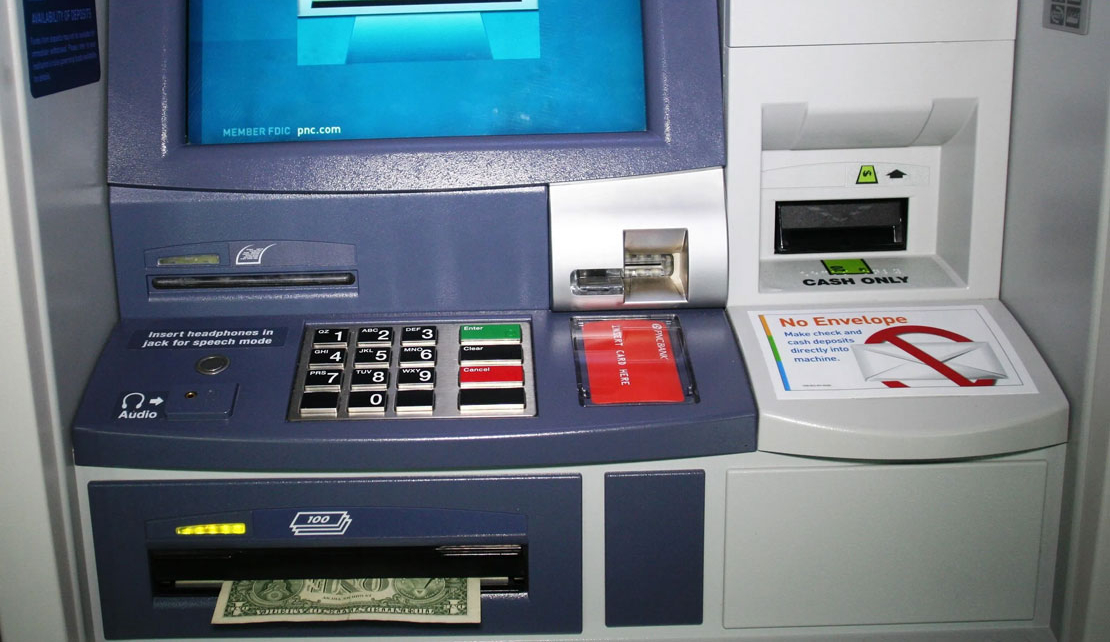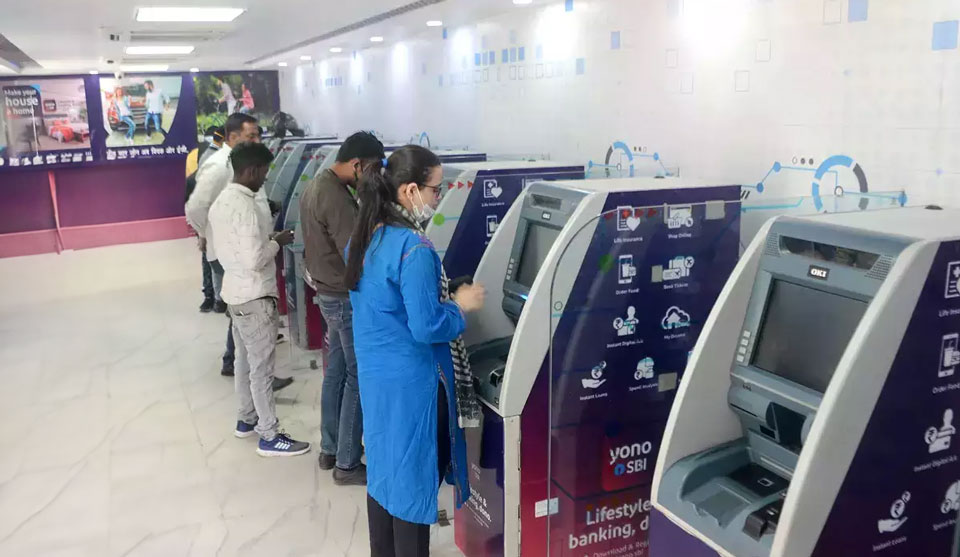JAMAICA | Bank of Jamaica issue new standards for ABM banking machines

KINGSTON, Jamaica April 3, 2024 - The Bank of Jamaica (BOJ) has issued new service-level standards as guidelines for the operation of Automated Banking Machines (ABMs) by deposit-taking institutions (DTIs) which are regulated by BOJ.
In December, the member of parliament for St Catherine Southern, Fitz Jackson, tabled a motion in the House of Representatives calling on the Bank of Jamaica to enforce minimum service standards for automated teller machines (ATMs) across the nation.
His concern came in light of the extensive financial losses Jamaican consumers have faced, totaling billions of dollars, due to the current inadequacies in ATM services, citing growing complaints from members of the public about malfunctioning ATMs that are often out of cash.
 The new standards were issued on April 2 and DTIs have a nine-month transition period to bring themselves into conformity with the guidelines, given the far-reaching nature of the service-level standards.
The new standards were issued on April 2 and DTIs have a nine-month transition period to bring themselves into conformity with the guidelines, given the far-reaching nature of the service-level standards.
Compliance will be assessed through BOJ’s review and publication of monthly reports from the DTIs. No monetary sanctions will be applied as a result of breaches of the guidelines, however, non-adherence may give rise to supervisory concerns around safety and soundness with the attendant supervisory consequences.
Monthly reports on the performance of each DTI’s fleet of ABMs will be published with a two-month lag. These reports will include the geographical distribution of ABMs, the number of machines that were installed, the proportion of ABMs that were operational for the reporting period, the uptime for operational machines over the period and the recovery time for malfunctioning machines.
The ABM standards have been issued in a context where, despite the increasing availability and use of electronic payment methods, a significant number of Jamaicans still rely on cash to conduct transactions.
The service-level standards have been developed as best practice principles governing the management and oversight of ABMs by DTIs, and form part of ongoing work to promote fairer treatment and enhanced protection for financial consumers.
The issuing of the standards follows consultations with the DTIs, and the guidelines have been put forward against the background of the development of a more robust market conduct and consumer protection framework for the financial services sector.
The new framework will be supported by appropriate legislation under the Twin Peaks system of financial sector regulation which is being developed. The standards also form part of the practising of the Twin Peaks regime ahead of the passage of supporting legislation.
The standards address (i) the availability of cash (ii) infrastructure maintenance and the management of service disruption (iii) ABM fees and charges (iv) the deployment of machines (v) accessibility and ease-of-use (vi) fraud minimisation (vii) the safety and security of customers and (viii) financial education of ABM users. The guidelines are contained in the document, “Minimum Automated Banking Machines Service-Level Standards to Strengthen Consumer Protection for Customers of Deposit-Taking Institutions,” which has been published on the website of BOJ.
 Below are highlights of the standards:
Below are highlights of the standards:
Availability of Cash
- Minimum 90 per cent of ABMs to be operational;
- Minimum 95 per cent uptime for operational ABMs;
- Maximum time out of cash: 60 consecutive minutes (urban and resort areas), 180 minutes (other areas);
- A board-approved ABM cash-risk-management policy & procedures:
- To aid in assessing the demand for cash and ensure that cash levels are adjusted accordingly to prevent shortages;
- Periodic reviews of ABM restocking schedules so that cash levels do not fall below determined minimum thresholds;
- Appropriate technology to alert the DTI when each machine reaches the minimum floor, and when it is out of cash;
- Contingency plans to address unexpected events, such as sudden spikes in demand or technical failures.
Maintenance & Management of Service Disruption
- Implement systems for real-time notification to DTI when a machine is out of service;
- Notify customers when a machine malfunctions for a prolonged period of time;
- Downtime should not be for more than three consecutive hours;
- Customers within a specified geographical radius to be provided with information on nearby ABMs and the banking services they offer.
ABM Fees and Charges
- Customers have the right to transparent information about products/services and their prices;
- Transparently and comprehensively disclose ABM fees and charges to customers, including displaying them prominently at ABM locations;
- BOJ will commission assessments of ABM-related fees to determine their reasonableness and relevance. The assessment will help to ensure that fees are aligned with costs associated with the provision of the service/services, while balancing considerations of affordability by consumers;
- Represent all fees in units of Jamaican Dollars (JMD) to avoid ambiguity and ensure consistency in the disclosure of fees. Financial customers are to know the full costs associated with ABM services and be able to compare costs across providers;
- Before increasing ABM fees, DTIs are required to write to BOJ to provide justification and request the non-objection of the regulator;
- Fees can be increased if (1) the regulator indicates, in writing, a non-objection to the proposed change in fees or (2) the regulator does not object within 30 days of the date on which the application for a non-objection is made;
- Having received a non-objection, the DTI should give at least 45 days’ notice to the public of its intention to adjust the fees.
Deployment of Machines
- DTIs to provide regulator with two months’ notice of intention to remove an ABM, with justification for its removal, and a plan of action outlining reasonable alternative access for customers, as well as the method of public notification;
- ABMs to have audit trail and log capabilities comprehensive enough to facilitate investigations, reconciliation and dispute resolution.
- DTIs to ensure the display of customer support information for direct access by customers who have experienced loss of card or funds resulting from the use of ABMs. Clear service-level standards are also expected from DTIs in such cases.
Accessibility and Ease-of-Use
- Ramps to be installed at ABM locations to improve access for disabled persons, subject to relevant legislation;
- Infrastructure and technology to be in place at ABMs to improve customer experience for the elderly and disabled, subject to relevant legislation.
Fraud Minimisation
- Customers are to be protected from loss of assets during their use of banking services;
- DTIs are required to conduct annual assessments of ABMs to determine whether enhanced policies, procedures, protocols or technology are needed to remedy emergent security/fraud risks;
- If the assessment shows the need for new technology, the DTI must submit to BOJ, an action plan outlining the process by which the new technology will be implemented;
- DTIs are to include in their cash-risk-management policy, appropriate measures to limit the possibility of various types of fraud.
Safety and Security of Customers
- ABMs are to be situated in a manner and in locations that ensure a satisfactory level of security for users, including maintaining the confidentiality of their transactions;
- DTIs are to ensure that cash management service providers utilise appropriate security measures.
Financial Education of ABM Users
- DTIs are to provide financial education programmes to increase customers’ knowledge about the proper use of ABMs and the associated risks;
- DTIs are to inform customers how to recognise ABMs that have been tampered with to facilitate fraud.
The full text of the ABM Guidelines is available at: https://boj.org.jm/core-functions/financial-system/supervisory-guidance-notes-reporting-requirements/

 En
En  Ar
Ar